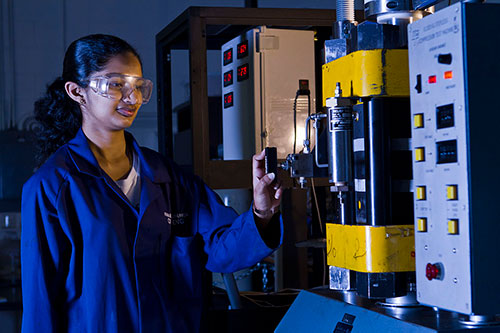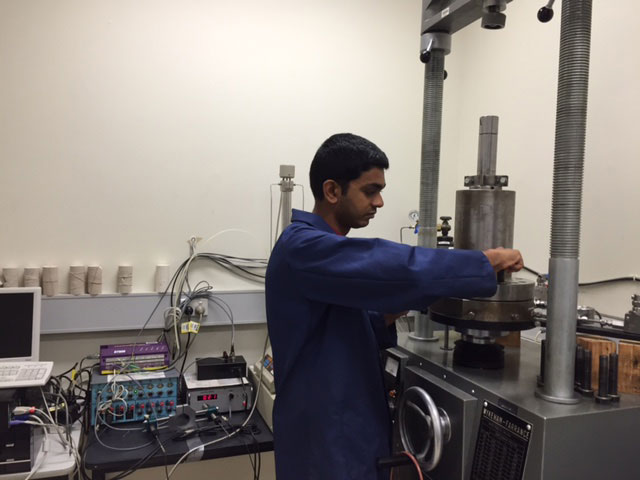A sustainable cement for deep well applications
Today, waste generation is increasing at an alarming rate with the rapid development of the industrial sectors and the complex lifestyles of the growing population. Some of the significant consequences of long-term industrial and municipal waste storage are the lack of suitable storage space, groundwater contamination due to leaching, air pollution with dust blow, landslides, and the cost and energy requirements of haulage and collection. The possible inclusion of waste resources in cement binders is a viable solution to overcome the adverse effects of waste generation. However, the successful utilization of such types of waste is yet to be perfected.
In this project, one-part alkali-activated cements (AACs) have been developed utilizing considerable amounts of waste resources such as coal ash, blast furnace slag and municipal waste glass, thereby contributing to the elimination of adverse environmental impacts. Ultimately, recycling these wastes in AACs produces cost- and emission-effective binders with lower energy consumption than Portland cement, leading to sustainable construction practices.
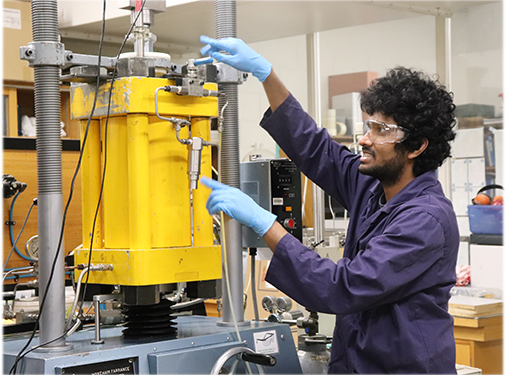
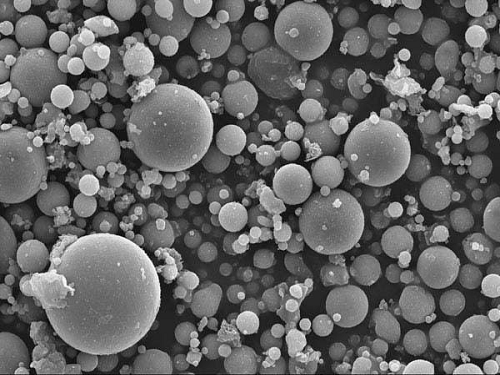
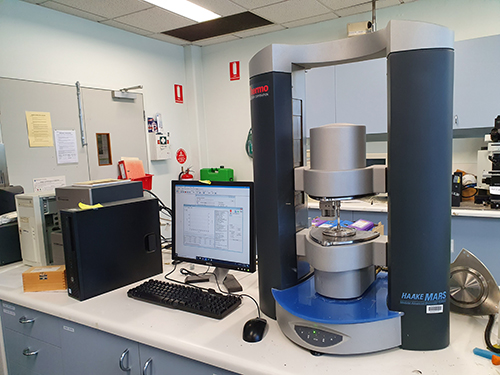
Rock damage evolution with hydro, thermo and mechanical alteration in EGS
As fossil-fuels-dominated energy mix has conducted many environmental concerns such as extreme weather events, smog, and acid rain due to the exhaust emissions, a worldwide concern is aroused to strengthen the efforts in developing alternative green energies. Geothermal energy, as a renewable and sustainable alternative, has distinct advantages in aspects of large reserve, weather proof, base load, stability and safety. EGS (Enhanced Geothermal System), aiming at extracting heat resources from HDR (Hot Dry Rock), is convinced to have great potentials. For instances, it can feed China and US for several millenniums given only 2% of their EGS reserve at depth from 3~10km been efficiently utilized.
As a general concept of EGS, it first adopts permeability stimulation to enhance the permeability of HDR and then pumps fluid cycling from injection borehole(s) to production borehole(s) via the sub-ground fractured hot rock with deep thermal energy being carried out within the heated fluid. The engineering measures of EGS is primarily associated with the damage of reservoir rock being along with complex interactions among thermal, hydraulic and mechanical processes. A satisfactory EGS would initiate a fracture pattern that, on the one hand, ensures comparatively high formation permeability allowing adequate rate of cycling flow; On the other hand, the fracture pattern is excepted not to include direct main fractures connecting injection and production boreholes to avoid short-circuits. Currently, field trails have seldom stricken excellent balances between the two poles, retarding the commercialization of heat mining from HRD. However, the two dialectical poles can be unified assuming that a fracture pattern (crack network) is obtained that crosses every contact of rock grains (breaks every inter-granular contact bonds and even generate inner-granular cracks). In the scenario, the heat in each grain can be flushed out with adequate fluid-flow rate flowing twisting every grain.
Therefore, this work studies mechanisms of damage evolution of reservoir rock in EGS with hydro, thermo, and mechanical alteration, from rock particle perspective, which will contribute to realising the aforementioned scenario. Attentions will be given to both separate and coupled hydro, thermo, and mechanical processes to shed light on the topic via methodologies of numerical simulation (configured on Discrete Element Method) (~70%), theoretical derivation (~15%) and experimental investigations (~15%). A series of work will be carried out to address the effects of varying rock internal parameters (mineral composition/distribution, micro-texture, thermo properties, etc.), type of stimulating fluid (water-based, CO2 and ScCO2) and external hydro, thermos, mechanical conditions. The work above is designed intending to obtain a comprehensive knowledge on rock damage evolution to improve the crack geometry for optimum heat extraction in EGS. Specifically, granite i. e. a common reservoir rock of EGS will be mainly used in the project.
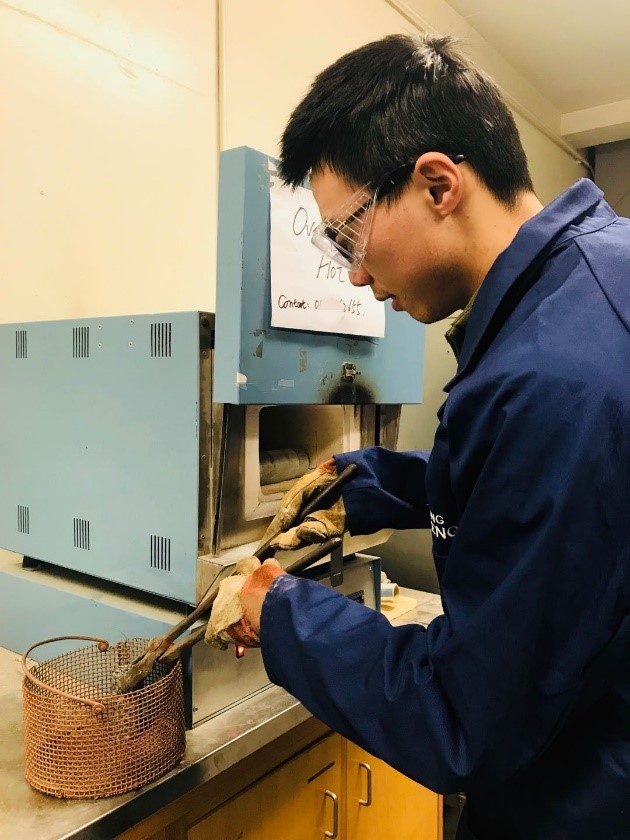
A third-generation disruptive technology for mining (3G-DTM): a new technique for deep earth reservoir rock stimulation
Most deep earth operations, oil and gas extraction, geothermal energy, and in-situ mineral recovery requires a well-developed fracture network in the host rock for economical and efficient energy recovery. However, a host rock formation with good fracture connectivity is often not encountered in these operations. Therefore, artificial fracture stimulation methods in host rock formations is a vital precursor for economical and efficient recovery of resources. In this regard, the most commonly adopted method of fracture stimulation is hydraulic fracturing. Although effective, this technique is notorious for its adverse environmental impacts such as, excessive use of water, uncontrolled fracture propagation which leads to the contamination of groundwater and induced seismicity. Therefore, controlled fracture stimulation in host rock formations using slow energy releasing techniques has become a necessity as an alternative to prevailing deep earth rock fragmentation techniques.
In the light of this requirement, the researchers of the 3GDEEP laboratory at Monash University have produced a slow energy releasing, novel non-explosive demolition agent which can potentially be applied in a multitude of deep earth energy and mineral extraction operations for host rock fracture stimulation. This patent-pending design is a calcium oxide based cementitious compound. When mixed with water and injected into pre-drilled wells in a host rock, it creates multiple radial fractures around the well as a result of expansive pressure generated by volumetric expansion resultant from the chemical reaction. Until now, the application of this compound has been limited to surface rock fragmentation and non-explosive demolition of structures. The compound has been modified to be applied in underwater, high confining pressure and high salinity conditions (for deep earth and seabed explorations) with a high thermal stability, and fluidity. At present, numerical simulations are being carried out to optimize rock fragmentation using 3G-DTM
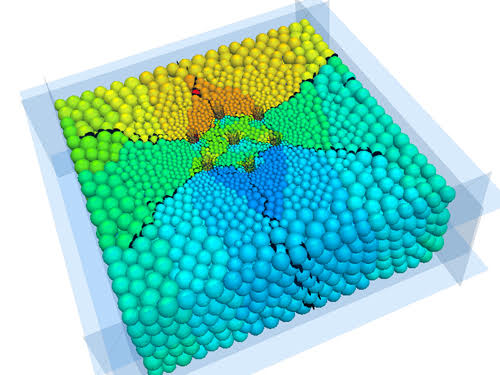
Sustainable development of energy and mineral resources
Geological sequestration of CO2 in deep saline aquifers: Chemico-hydrological considerations
Today it has become a must requirement to have proper CO2 emission control techniques to create a safer atmosphere for human beings. Geosequestration of CO2 in deep saline aquifers is one of the promising measures due to its high storage capacity and ability to provide a longer life-span for the injected CO2. However, exposure to CO2 causes the mineral composition of the aquifer to be changed, which affects the mineralogical and micrological structure of the aquifer’s rock and consequently changes its flow and strength properties. Therefore, this study has been aimed to identify effect of CO2 sequestration on aquifers flow and mechanical properties with giving special consideration on the CO2 injection induced geo-chemical reactions in the aquifer.
This project is funded by Australian Research Council (ARC) and a high pressure core flooding apparatus (Fig:1) is used to determine the flow properties through Warwick sandstone cores taken from Brisbane Australia, as the representative of reservoir rock.. Either 25mm or 38mm in diameter rock cores up to 300 mm in length can be tested under in-situ temperature and stress conditions of deep saline aquifers (20 to 150oC temperature, up to 70 MPa overburden pressure and up to 42 MPa injection pressure). Injection of CO2, brine and water can be carried out either at a constant pressure or a constant flow rate conditions and the pressure development along the sample can be monitored. The preparation of samples and sample assembly which is placed in the core holder inside the oven of this apparatus has been shown in the Fig:2. Chemical reactions of sandstone samples are tested using SEM and XRD analysis conduct for the samples immerged in carbonated brine for long time period in pressure chambers.
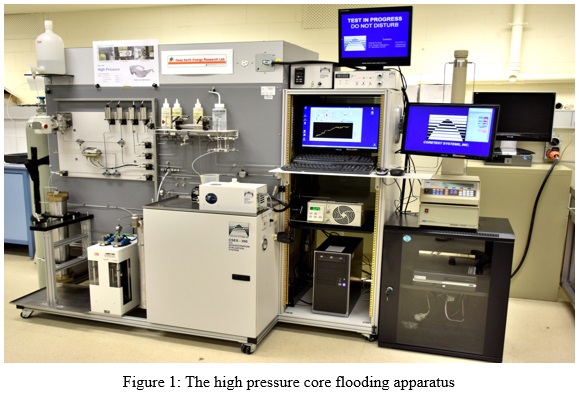
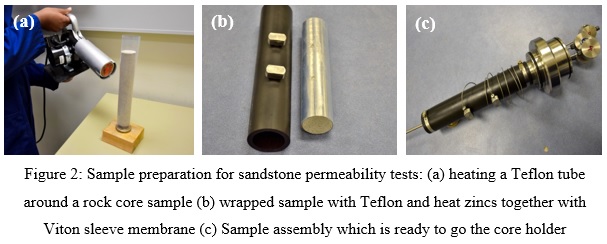
Shale gas exploration based on the hydro-fracturing
Shale gas has become a promising source of energy in recent years, especially in North America, giving rise to abundant of field applications and research. Compared with the oil or conventional gas reservoirs, shale reservoirs are usually deeper in depth, lower in permeability with higher clay content, resulting in its difficulty for exploration. Hydraulic fracturing is the most frequently used technique to stimulate the low-permeability shale reservoirs. And most of the fracturing fluids are water-based due to low cost. However the mechanism of the interaction between fracturing fluid and the gas-shale is not fully uncovered, like the fracture initiation and propagation, fracture geometry, evolution of reservoir permeability. Many field application results are unsatisfactory due to our poor understanding.
The effects of the hydro-fracturing is influenced by shale reservoir properties (TOC content, clay content, porosity and permeability, brittleness index), injection regime and in-situ stress field etc.. My PhD research concentrates on the optimization of fracture network formation based on hydro-fracturing. It involves to investigate the impacts of these influencing factors by literature review, lab tests and modelling, and to optimize the fracturing designs. The output of my research will contribute to the understanding of hydro-fracturing used in shale reservoirs and provide guidelines for the field trials.
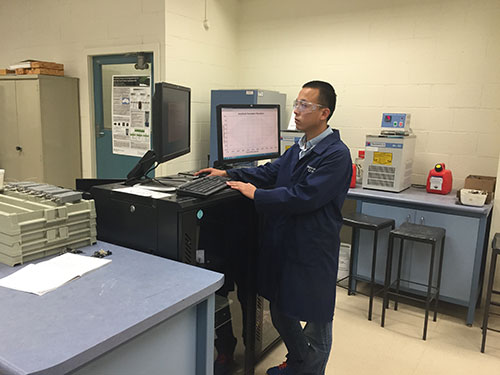
Shale gas fracturing using non-viscous fluid
The widely used of hydraulic fracturing in unconventional gas reservoirs with ultra-low permeability has greatly increased the gas production. While there are two main problems associated with water-based fracturing fluid in shale reservoirs, formation damage and long cleanup time, which pose a threat to the shale gas production. In order to eliminate the disadvantages induced by viscous water-based fracturing fluid, liquid CO2 with very small viscosity has been successfully applied as a kind of fracturing fluid. As an inert gas, CO2 has little interaction with gas shale, so it effectively avoids the formation damage; and the gratification CO2 in reservoirs returns to the surface with a short cleanup time. The main aim is to investigate the performance of CO2 as a fracturing fluid in shale reservoirs and to compare the difference between water-based fluid and fluid CO2 in the fracturing effectiveness.
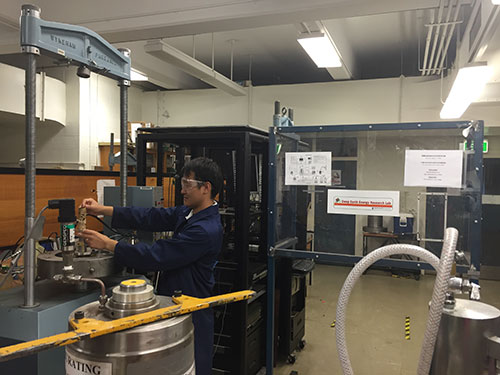
Shale gas fracturing using foam based fluids
Shale gas is an abundantly available natural gas around the world as well as in Australia and traditionally water based hydraulic fracturing is used to produce gas from deep shale plays. However, this practice fails to produce commercially viable amount of gas (Ex.: proppant, that are usually required to keep created fracture in open state, is hard to controlled by water based fracking fluids) and raises many environmental issues; large volume of fresh water consumption, and surface and ground water contamination. In this regards, foam based fracturing fluids provide solution to these problems through; a small volume of water consumption, low fluid loss, reusable and recyclable, shear stable over a wide temperature range, low pressure drops due to friction and high capacity to transport proppants to deep and upper fracture surface. Generally foam based fluids consist with three major components; 1) external phase: water, alcohol and acid; 2) internal phase: Nitrogen and Carbon dioxide; 3) foaming surfactant to combined the two phases. Due to low water usage and high proppant carrying capacity, foam based hydraulic fracturing is environmental friendly as well as it is an economical solution for the shale gas extraction. The goal of this study is to investigate a new stimulation methodology for extraction of shale gas using foam based hydraulic fracturing.
Investigation of Long-term Safe Storage of CO2 in Deep Coal Seams with Enhanced Methane Recovery
CO2-ECBM process has been identified as an economical coal bed methane production enhancing technique as this process has the ability to significantly enhance the coal bed methane production while sequestrating considerable amount of CO2 in deep coal seams, which is an effective measure to mitigate global warming. According to the existing findings, injection of CO2 into deep coal seams causes to induce a strain in between the coal matrix and the adsorbing CO2 layer, which is commonly known as coal matrix swelling. This swelling causes both seam permeability and strength to be significantly reduced. The permeability reduction causes the amount of injectable CO2 and producible methane (CH4) in coal seam to become unpredictable and the strength reduction affects the long term safety of the ECBM and CO2 sequestration processes as this may cause the injected CO2 to be back migrated into the atmosphere after sometime of injection. Therefore, injection of massive amount of CO2 into deep coal seams to harvest maximum amount of methane from the seam with reducing anthropogenic CO2 volume in the atmosphere has become a great challenge.
Therefore, this project aims to discover optimum measures to store maximum amount of CO2 in deep coal seams using enhanced coal-bed methane recovery. This study consist of a series of experimental works to address these issues; which utilize advanced tri-axial set up and core flooding apparatus available in the 3GDeep Laboratory to investigate the effect of various factors (temperature, CO2 phase and pressure. etc.) on CO2 storage and CH4 production using different ranked coal (Lignite to Anthracite) from both Australia and China. Following the flow experiments, effect of CO2 injection under varies conditions on coal mass strength are also studied using the tri-axial set-up and unconfined compressive strength (UCS) machines to check the CO2 adsorption induced strength reduction in coal incorporating the acoustic emission (AE) and Ultrasonic wave generation systems (UT). In addition, the CT scanner and SEM analysis are conducted to study the pore structure variation due to CO2 injection into the sample under various test conditions.
This knowledge is then used to develop new analytical and empirical models to incorporate the physical responses of the coal seam during CO2 sequestration process. Afterward the developed models will be used to create a proper lab-scale numerical model and this model will then be extended for field-scale condition, which will deliver quantitative and qualitative recommendations concerning the expected physical responses of deep coal seams in the ECBM process. It will be a significant contribution as it represents a necessary component of an effort to ensure that Australia effectively and economically fulfils its responsibility in the international effort to curb the threat of global warming.
